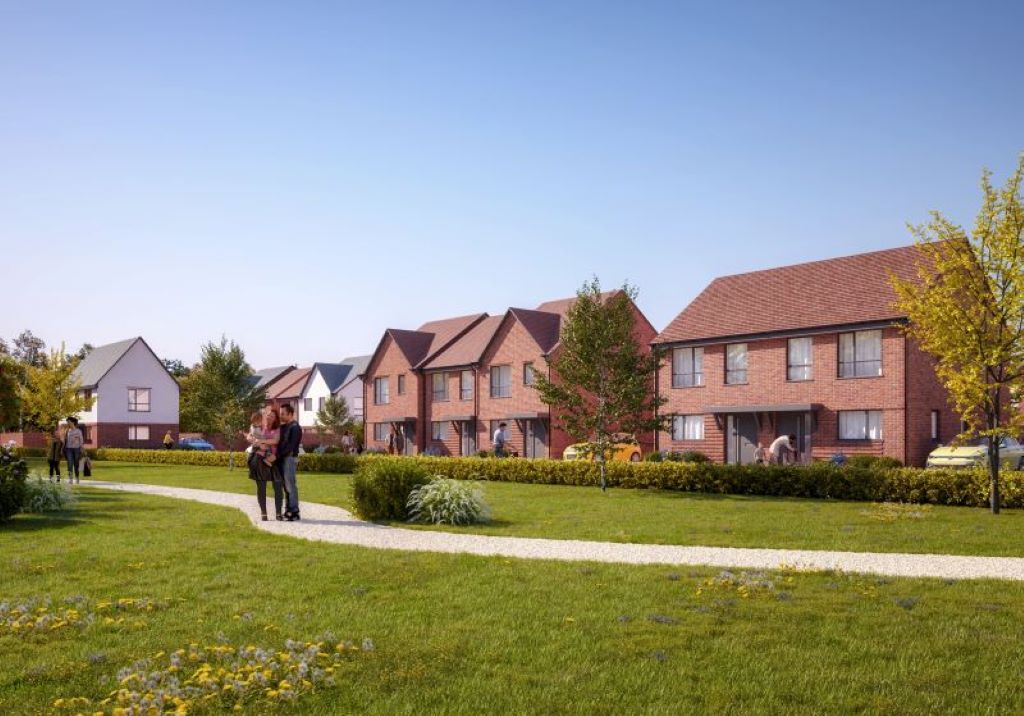The Subplot
The Subplot | Can Labour crack the housing crisis?
This month’s long read
- Let’s party with Angela: can Rayner get developers dancing to her tune?
- Elevator pitch: your regular guide to what’s going up, and what’s heading the other way
LET’S PARTY WITH ANGELA
Labour’s housing chief plans to boogie
There are, apparently, 200 large housing development sites “ready to go” if only somebody would let developers build.
This is the premise of deputy prime minister Angela Rayner’s latest plan to get developers dancing to her tune.
Perhaps the tabloid-quipped ‘Angela Raver’ is more apt – the name christened after Rayner was tik-toked throwing some shapes behind the DJ booth during a holiday jaunt to Spain. But this silly season story had a point, because Rayner really does want to dance with developers as she tries to meet ambitious housing targets.
Foot on the floor
The latest plan is called the New Homes Accelerator. It’s about providing resources to local councils to speed up decisions on the larger, trickier sites.
“A lack of planning department capacity and misaligned incentives for other public bodies and statutory consultees has created a process with huge uncertainty,” the latest Ministry of Housing, Communities, and Local Government statement said.
The New Homes Accelerator wants to work with the planning system, not against it, to get things moving on up to 300,000 new homes. A site in Liverpool is in the first wave: at a guess, this is Central Docks, where Peel Waters has secured a £55m investment from Homes England as part of a 2,350-home scheme.
The minister says yes
Meanwhile, Rayner’s team is unblocking from another direction, waving through some very large – and controversial – housing schemes. Proposals dating from 2022 for 1,500 homes on Green Belt close to Sniperley Farm in Durham were approved on appeal this week, along with three further applications for another 800 homes. Planning minister Matthew Pennycook’s decision letter smashed the ball right out of the court.
Whitehall insists
Ministers may have to step in a lot more. For instance, keep an eye on plans for 278 homes at Stockport’s Gatley Golf Club. Despite officer recommendations to approve a 44-acre, 278-unit housing scheme, councillors voted to say no. The proposal, for the disused course, included 50% affordable homes, and roughly half the land was to remain open space – so it’s hard to know what would please local politicians. Presumably, the answer is nothing on that site.
Consent isn’t everything
But look, too, towards Liverpool’s Festival Gardens site for proof that any amount of planning permission does not guarantee work starting. A 28-acre slice close to the river and public transport has already been expensively remediated ready for up to 1,500 homes. After five years of work preparing the site, the council is seeking a developer. It comes after the many false starts in this area, with some unkind below-the-line comments suggesting a fairy godmother would be more useful.
It’s not a bug, it’s a feature
The difficulty Rayner faces is fundamental: the Town & Country Planning Act 1947 was devised precisely to stop developers simply responding to market forces. Higher national destinies, and local aspirations, were given a veto. Since then, efforts have been made to reshape the planning system to serve the market rather than curb it, but it remains what it always was. To complain that the planning system doesn’t respond smoothly to economic needs is to confuse a feature with a bug.
Why it doesn’t work
The 1947 Act was a compromise, and not quite the full land nationalisation some wanted. So whilst the planning system’s refusals are absolute, and ‘no’ really means ‘no’, when it grants consent it is merely permission to build, not an instruction. This lopsided approach is where the problems begin, because handing out a limited supply of planning consents inevitably confers special value on consented land, a value it wouldn’t have if the state hadn’t limited the supply in the first place. This pushes up land prices.
At the same time no developer, big or small, is going to do anything that doesn’t pay. This includes flooding the market with houses and thus reducing prices. Drip, drip, drip is safer. So the market is caught in a vice between steeper land prices caused by the government, and developers’ reluctance to dent their own market pricing, because (among other things) land is so expensive. This is not a recipe for mass housing starts.
More tractors, comrades!
In short, if the government wants more or cheaper houses it has to build them itself, and it doesn’t want to do that, so we go round and round in circles. Subplot has yet to meet a planning consultant or private sector developer that hasn’t said this, or something like it, often in despair. No surprise that in a thin market, and despite government exhortations, housing completions in the North West dipped by 5% in 2023-2024. Nationwide, the housing market is producing about half the government’s 300,000-a-year target. State planning for housing output is as likely to be successful as state planning for tractor production, but ho-hum. Here we go again.
 ELEVATOR PITCH
ELEVATOR PITCH
What’s going up, and what’s heading the other way
It’s a good week to take a fresh look at the shed market, as investors and developers begin to position themselves. Perhaps not such a good week if you think price inflation is bad and needs to be licked. Doors closing, going down.
 Broad-based office markets
Broad-based office markets
The disconnect between what the property market thinks are good things, and everyone else thinks are bad things, is never greater than on price inflation. According to real estate folk, rising rents are good. For the rest of the economy, this is a case of painful inflationary pressure.
This week, Knight Frank said in public what everyone says in private, which is that Leeds prime office rents will hit £40/sq ft this year. Today, top rents hover around £38/sq ft. There is space under offer at £39/sq ft and it’s not genius-level market analysis to see where it goes next.
Strong Q1 take-up, and OK H2 take-up, underpin the confidence that the only way is up. Around 193,000 sq ft of Grade A floorspace is on the market today, with another 430,000 sq ft coming in the not many months to 2026.
Top-of-the-market, high-amenity floorspace drives a market, and Leeds is being driven well (from the point of view of landlords). But the cratering of demand at slightly lower levels across the UK means the risk is a busy Grade A scene supported by a slightly flaky hardcore of Grade B and C deals. Ultimately, that is not where any growing economy needs to be.
 Sheds are back!
Sheds are back!
Remember when you were all humming along to a young-looking Ed Sheeran’s Bad Habits? What about Olivia Rodrigo with her Number 1 Awards for Good 4 U and Sour? Where’s she today? And Covid – what was all that about?!
Yes, let’s wallow in 2021 nostalgia, particularly 2021’s fascination for high-value shed developments. A lot has changed since and for a year or two it felt like the warehouse property scene was exhausted, or sleeping. Suddenly it’s back. A string of big Midlands developments is now being matched by some movement in the North.
Encouraged by deals such as Greene King’s signing for a 300,000 sq ft Tritax unit in Rochdale, construction of the 420,000 sq ft final Omega West unit, and the completion of schemes like Peel Ports’ 237,000 sq ft Alexandra Dock in Liverpool, the market is beginning to pick up speed.
The smaller end of the market is already rolling, with Logicor at work on a 43,000 sq ft unit in Altrincham. Investors sniff a rising market, with joint venture KKR-Mirastar leading the list of those scenting an opportunity. It acquired two units in Sheffield and others in Salford, Crewe, and Liverpool totalling 890,000 sq ft. The largest, a 346,000 sq ft unit in Smithywood, Sheffield, is let to Advanced Supply Chain Group.
Get in touch with David Thame: [email protected]




